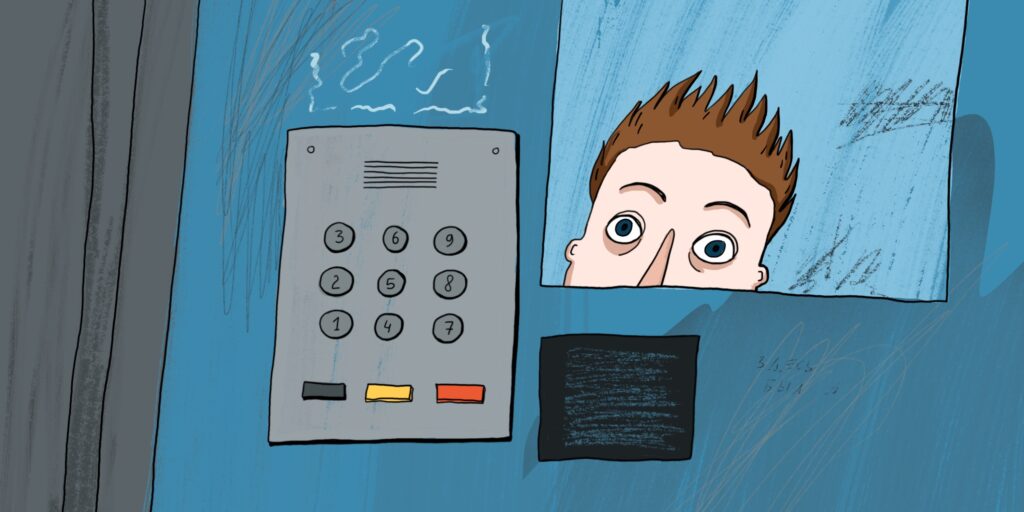You can listen to the article. If it’s more convenient for you, turn on the podcast.
If you regularly use an elevator, the thought has probably crossed your mind at least once: what if the cables holding the cabin break and you fall into the shaft? And will you be able to survive?
It sounds creepy. But in practice, such a situation is extremely unlikely. Statistics show that elevators are the safest way to move between floors. For example, on stairs in the USA every year is dying on average 12,000 people and more than 1 million injured. For comparison: as a result of accidents with elevators annually approximately 27 people die and approximately 10,000 are injured.

Moreover, the majority of those injured in elevators were builders or repairmen who worked in violation of safety regulations. Passengers per year is dying about five were people who tried to get out of a faulty cabin on their own or found themselves trapped by doors or between floors.
Elevators are equipped with numerous safety systems that prevent the cabin from falling.
The cabin does not hang in the shaft on cables by itself, but moves on vertical rails. And if it begins to descend faster than the set speed, the safety devices are activated and the elevator smoothly slows down due to the friction of the pads on these rails.
In addition, the pulley system on the cab roof has additional fuse. If the blocks in it move too quickly, it will become blocked. So if one cable breaks, the cabin will hang on the remaining ones. Steel ropes are strong and it is very unlikely that they will break all at once.
In addition, at the bottom of the shaft there are built-in shock absorbers – these are pistons in oil-filled cylinders. If the elevator falls from a small height and the catchers do not have time to brake it due to friction of the pads on the rails, shock absorbers will accept hit yourself. And finally, the air itself at the bottom of the shaft, compacting under the falling cabin, serves as a kind of cushion, further reducing potential damage.
But let’s say the cables are broken, the pulley locking mechanism is faulty, and the safety catches don’t work. The elevator falls and you have only seconds. What to do?

There is a popular tip floating around the Internet: in the last seconds before the elevator crashes into the bottom of the shaft, you need to jump in order to be in the air during the collision. But this is another myth.
First of all, you you can’t accurately guess the time to jump. And secondly, even if this happened, human muscles simply do not have enough strength to compensate for the speed of the elevator’s fall – even if you are a world-class athlete. At best you reduce at 3–5 km/h – this is completely insufficient. Most likely, you will not only hurt yourself when you fall, but you will also break your head in the jump if you manage to pull off this crazy stunt.
If you just stand, even holding the handrails (if there are any), the entire impact will fall on your legs and spine and you risk serious injury.
Therefore, the best tactic is to lie on your back on the floor as flat as possible.
This will distribute the force of the impact over the largest area of your body. And no specific area will be at risk of being injured by the weight of any other part of the body, speaks Eliot Frank, a research engineer at the MIT Center for Biomedical Engineering.
You might think that you can protect yourself by bending your legs or pulling yourself up on the handrails. But at the moment of impact when falling from a great height, your legs simply will not be able to support the weight of your own body. Even the weight of the head would be too much great for the neck, so you can’t hold it suspended. Press your head to the floor, protecting it with your hands.
So lying on your back is the most safe option if the elevator falls. You’ll still be in a lot of pain, and you’ll probably break a few ribs, but you’ll have a better chance of keeping your internal organs intact.
Read also 🛗🧯🆘
